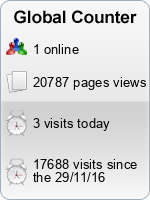Study of Chemotherapy Induced Nausea and Vomiting In Children With Malignancy
Abstract
OBJECTIVE: To study chemotherapy induced nausea and vomiting (CINV) and efficacy of antiemetics in children (<18 years of age) treated for pediatric cancers with cancers chemotherapy regimens having moderate or high emetogenic potential.
METHOD: This was a prospective observational study, which assessed the current usage, Chemotherapy cycles in subjects, which met the eligibility criteria were studied for chemotherapy induced nausea and vomiting (CINV), using National Cancer Institute (NCI) Common Toxicity Criteria. A total of 50 patients who met the study criteria were enrolled in to the study. All the data pertaining to reason for the antiemetic agents used were based on the emetogenic potential of the chemotherapy protocols. The main objective was to document the prescribing and administration of antiemetic and collect data on the incidence of CINV with the purpose of studying the effectiveness of antiemetic medication used.
RESULT AND DISCUSSION: It was observed in our study that use of ondansetrone was according to standard guidelines. Hence although fairly good control of emesis was recorded for moderate emetogenic regimens, strategies for further improvement in antiemetic schedule for high emetogenic schedules should be considered. vincristine-actinomycin-cyclophosphamide had the highest rate of emesis while high dose methotrexate had the best control.
CONCLUSION: Hence although fairly good control of emesis was recorded for moderate emetogenic regimens, strategies for further improvement in antiemetic schedule for high emetogenic schedules should be considered. Among the various chemotherapy schedules used, it was observed that rate of acute emesis control was poorest with vincristine-actinomycin-cyclophosphamide and best control was observed with high dose methotrexate. This observation may be kept in mind when planning the anti-emetic protocol for these regimes.
Downloads
References
Coates A (1983) on the receiving and patients perception of the side effects of cancer chemotherapy. European journal of cancer and Clinical Oncology. 19, 2, 203-208.
Ronald, Fischer (2005) Delayed vomiting in children with cancer after receiving moderately high and highly emetogenic chemotherapy. Journal of Pediatric Oncology Nursing. 24, 2, 70-80.
Anti-emetic Subcommittee of the Multinational Association of Supportive Care in Cancer (2006) Prevention of chemotherapy and radiotherapy-induced emesis: results of the 2004 perugia International Anti-emetic Consensus Conference. Annals of Oncology. 17, 1, 20-28.
Bloechl-Daum (2006) Delayed nausea and vomiting continue to reduced patient’s quality of life after highly and moderately emetogenic chemotherapy despite anti-emetic treatment. Journal of Clinical Oncology. 24, 27, 4472-4478.
Molassiotis A (2006) A Nausea and vomiting. In Kearney N (Eds) Nursing Patients with Cancer Principles and Practice. Churchill Livingstone, London.22-25.
Robinson DL, Carr BA (2007) Delayed vomiting in children with cancer after receiving moderately high and highly emetogenic chemotherapy. Journal of Pediatric Oncology Nursing. 24, 2, 70-80.
Copyright (c) 2015 Acta Medica Scientia

This work is licensed under a Creative Commons Attribution 4.0 International License.
Authors who publish with this journal agree to the following terms:
A) Authors retain copyright and grant the journal right of first publication with the work simultaneously licensed under a Creative Commons Attribution License that allows others to share the work with an acknowledgement of the work's authorship and initial publication in this journal.
B) Authors are able to enter into separate, additional contractual arrangements for the non-exclusive distribution of the journal's published version of the work (e.g., post it to an institutional repository or publish it in a book), with an acknowledgement of its initial publication in this journal.
C) Authors are permitted and encouraged to post their work online (e.g., in institutional repositories or on their website) prior to and during the submission process, as it can lead to productive exchanges, as well as earlier and greater citation of published work (See The Effect of Open Access).



